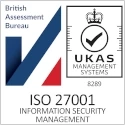15
+
YEARS OF
EXPERIENCE
1000
+
SUCCESSFUL
Projects
80
+
Satisfied
Clients

Cloud Security Services: A Comprehensive Guide for Businesses
In today’s digital landscape, the adoption of cloud technologies has transformed how organizations operate. While the cloud offers significant advantages, such as scalability, flexibility, and cost-efficiency, it also introduces various security challenges. As businesses increasingly rely on cloud services, ensuring robust cloud security becomes paramount. At TechCloud IT Services L.L.C., also known as Cloud Technologies, we specialize in delivering comprehensive Cloud Security Services that help businesses protect their data, comply with regulations, and mitigate risks. This article will explore the significance of cloud security, the various services we offer, and the benefits of implementing a solid cloud security strategy.
Understanding Cloud Security
What is Cloud Security?
Cloud security refers to the set of policies, technologies, and controls designed to protect data, applications, and infrastructures associated with cloud computing. It encompasses various measures, including data encryption, identity and access management, threat detection, and incident response. With businesses migrating to the cloud, the need for effective cloud security solutions has never been greater.
Importance of Cloud Security
- Data Protection: Businesses store sensitive data in the cloud, making it a prime target for cybercriminals. Implementing cloud security measures ensures that this data is protected from unauthorized access and breaches.
- Compliance: Many industries are subject to strict regulations regarding data protection. Cloud security services help organizations comply with regulations such as GDPR, HIPAA, and PCI DSS, avoiding penalties and legal issues.
- Business Continuity: Effective cloud security strategies include disaster recovery and backup solutions, ensuring that businesses can continue operating even in the event of a security incident.
- Reputation Management: A data breach can severely damage a company’s reputation. By investing in cloud security, organizations demonstrate their commitment to protecting customer data, fostering trust and loyalty.







Key Components of Cloud Security Services
At TechCloud, we offer a range of Cloud Security Services designed to address various security concerns. Our services are tailored to meet the unique needs of each organization, ensuring robust protection for cloud-based assets.
1. Data Encryption
Data encryption is a fundamental aspect of cloud security. It involves encoding data so that only authorized users can access it. TechCloud provides end-to-end encryption solutions for data at rest and in transit. This ensures that sensitive information, such as customer data and financial records, remains confidential and secure.
2. Identity and Access Management (IAM)
IAM is crucial for controlling who can access cloud resources. Our cloud security services include the implementation of IAM solutions that enforce the principle of least privilege. This means that users are granted only the access necessary to perform their job functions. Our IAM solutions also include multi-factor authentication (MFA) to enhance security further.
3. Threat Detection and Response
Proactive threat detection is essential for identifying and mitigating security incidents before they escalate. TechCloud employs advanced threat detection technologies, including machine learning and AI-driven analytics, to monitor cloud environments for unusual activity. Our incident response services ensure that when a security incident occurs, it is managed quickly and effectively to minimize damage.
4. Security Information and Event Management (SIEM)
SIEM solutions aggregate and analyze security data from multiple sources, providing organizations with real-time insights into their security posture. TechCloud offers comprehensive SIEM services that help businesses detect potential threats, investigate incidents, and respond promptly.
5. Compliance Management
Staying compliant with industry regulations can be complex, especially for organizations operating in multiple jurisdictions. Our compliance management services help businesses navigate the regulatory landscape, ensuring that cloud operations align with relevant laws and standards. We provide regular audits and assessments to identify compliance gaps and implement necessary measures.
6. Cloud Security Architecture Design
A well-designed cloud security architecture is crucial for effective protection. TechCloud works with businesses to develop customized cloud security architectures that align with their specific needs and risk profiles. This includes configuring secure network designs, implementing security controls, and integrating cloud services seamlessly.
7. Cloud Security Awareness Training
Human error remains a significant factor in many security breaches. Our cloud security awareness training programs educate employees about security best practices, helping to create a security-conscious culture within organizations. By training staff to recognize phishing attempts, manage passwords securely, and understand compliance requirements, businesses can reduce their risk exposure.
8. Continuous Monitoring and Assessment
Cloud environments are dynamic and continuously evolving. To ensure ongoing security, TechCloud offers continuous monitoring and assessment services. This includes regular vulnerability assessments, penetration testing, and security audits to identify and address potential risks.
Benefits of Implementing Cloud Security Services
Investing in Cloud Security Services offers numerous benefits that extend beyond simply protecting data. Here are some key advantages:
1. Enhanced Data Protection
With robust cloud security measures in place, businesses can significantly reduce the risk of data breaches. By implementing encryption, IAM, and threat detection, organizations can safeguard sensitive information from cyber threats.
2. Regulatory Compliance
Cloud security services facilitate compliance with industry regulations, reducing the risk of penalties and legal complications. Organizations can confidently demonstrate their commitment to data protection and privacy.
3. Improved Business Continuity
Cloud security services include disaster recovery and backup solutions, ensuring that businesses can quickly recover from security incidents and maintain operations. This resilience is vital for minimizing downtime and protecting revenue.
4. Cost-Effective Security Solutions
Building and maintaining an in-house security team can be costly. Outsourcing cloud security services to TechCloud allows businesses to access expert security resources without the overhead of full-time employees. This cost-effectiveness enables organizations to allocate resources to other critical areas of their operations.
5. Increased Customer Trust
Customers are more likely to engage with businesses that prioritize data protection. By implementing cloud security measures, organizations can build trust with their clients, leading to increased loyalty and brand reputation.
6. Access to Expertise
Cloud security is a specialized field that requires extensive knowledge and expertise. By partnering with TechCloud, businesses gain access to a team of skilled professionals who stay up-to-date with the latest security trends, threats, and technologies.
Cyber Security Services
Our cybersecurity services are designed to be professional and effective, helping businesses across the UAE safeguard their networks and data from ever-evolving cyber threats.Cyber Security Audit
Comprehensive cybersecurity audits to identify vulnerabilities, ensure compliance, and enhance your organization’s security posture.Microsoft Defender with EDR
Strengthen endpoint security with Microsoft Defender and EDR for real-time threat detection and response.
Best Practices for Cloud Security
To maximize the effectiveness of Cloud Security Services, organizations should adhere to several best practices:
1. Conduct Regular Security Audits
Regular security audits help identify vulnerabilities and assess the effectiveness of existing security measures. By scheduling audits with TechCloud, organizations can proactively address security gaps.
2. Implement a Robust Incident Response Plan
Having a well-defined incident response plan ensures that organizations can respond swiftly and effectively to security incidents. This plan should be regularly tested and updated to account for new threats.
3. Foster a Culture of Security
Creating a culture of security involves educating employees about the importance of data protection and security best practices. Regular training sessions and awareness programs can help reinforce this culture.
4. Keep Software Updated
Outdated software can be a significant security risk. Organizations should ensure that all software and applications used in their cloud environment are regularly updated to patch vulnerabilities.
5. Leverage Multi-Factor Authentication (MFA)
Implementing MFA adds an extra layer of security to user accounts, making it more challenging for unauthorized individuals to gain access.





Conclusion
In a rapidly evolving digital landscape, the importance of robust Cloud Security Services cannot be overstated. At TechCloud IT Services L.L.C., we are committed to providing businesses with comprehensive cloud security solutions tailored to their specific needs. Our expertise in data encryption, IAM, threat detection, compliance management, and continuous monitoring ensures that your organization’s cloud environment is secure and resilient against evolving threats.
By investing in cloud security, businesses not only protect their data but also enhance their reputation, ensure compliance, and foster trust with their clients. Contact us today to learn more about our Cloud Security Services and how we can help safeguard your organization in the cloud.
As a result of increasing number of business expanding to the United Kingdom market we are offering services of Cloud Security Services in London

answer time
satisfaction
score
on initial call
same business
day





